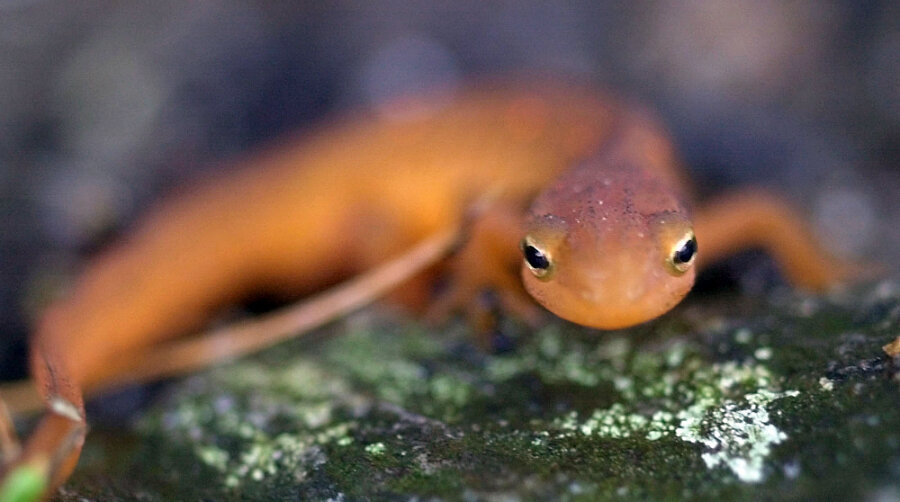Why US biologists feel urgency to protect the gentle newt
Loading...
United States Geological Survey biologists around the country are on the hunt for salamanders, looking to check up on thousands of the amphibians to determine if a fungus from abroad is impacting the creatures' domestic population.
Earlier this year, the US Fish and Wildlife Service (FWS) embargoed the importation and interstate transfer of 201 salamander species in an effort to halt the spread of the fungal pathogen Batrachochytrium salamandrivorans (Bsal), which has proven lethal to amphibians around the globe. While no reports of Bsal have yet occurred in North America, its deadliness has officials on the defensive against what they fear could be the biggest fungal threat since the ongoing white-nose syndrome plight threatening US bats.
Salamanders may frequently go unnoticed in nature, but their ecological importance makes the push against Bsal a significant conservation work. Their place in the food chain allows for insect control as well as reliable nourishment for larger animals, and a decline in salamander abundance could even have major effects on soil quality and climate change. And as Europe has already found, the spread of Bsal can wipe out amphibian populations in a matter of years, making the national survey an urgent effort.
"Very few animals are left," said Belgian professor An Martel, who originally discovered Bsal’s impact on Dutch salamanders, according to the Associated Press. "It has had a huge impact. The populations where the fungus is present are almost gone. We don't find any salamanders anymore."
"The Bsal fungus has the ability to devastate our native salamander populations, and we are doing everything in our power to protect and preserve these essential amphibians for future generations," FWS director Dan Ashe said in a January release regarding the service's ban.
Now, the USGS and FWS are partnering to ensure that their move to combat Bsal is working. The agencies are aiming to analyze 10,000 individual salamanders across North America, where nearly one-third of the 655 known salamander species live, to make sure the fungus isn't present in any of the native amphibians.
"We have the highest biodiversity of salamanders in the world," assistant FWS Fish and Aquatic Conservation director David Hoskins told the AP. "We were concerned that once the fungus reaches the United States – if it was introduced into wild populations – it could become established and spread and potentially wipe out important species of salamanders."
But so far, the news from the US survey has all been good. Biologist Evan Grant, coordinator for the USGS Amphibian Research and Monitoring Initiative's northeastern operations, says the national survey of newts – amphibians in the same family as salamanders – is nearly half complete. And around 1,000 salamanders nationwide have been studied so far by the USGS, with zero cases of Bsal yet confirmed.
Since 2004, more than 2.5 million salamanders are estimated to have been shipped from Asia to the US. While Bsal has yet to be identified in North America, it is believed that similar importation of the animals to the Netherlands, Britain, Germany, and Belgium initiated the outbreak there, an outcome North American agencies hope to avoid by isolating and canvassing the nation's population before it's too late. Canada, home to around 15 salamander species, is also mobilizing against the biodiversity threat.








